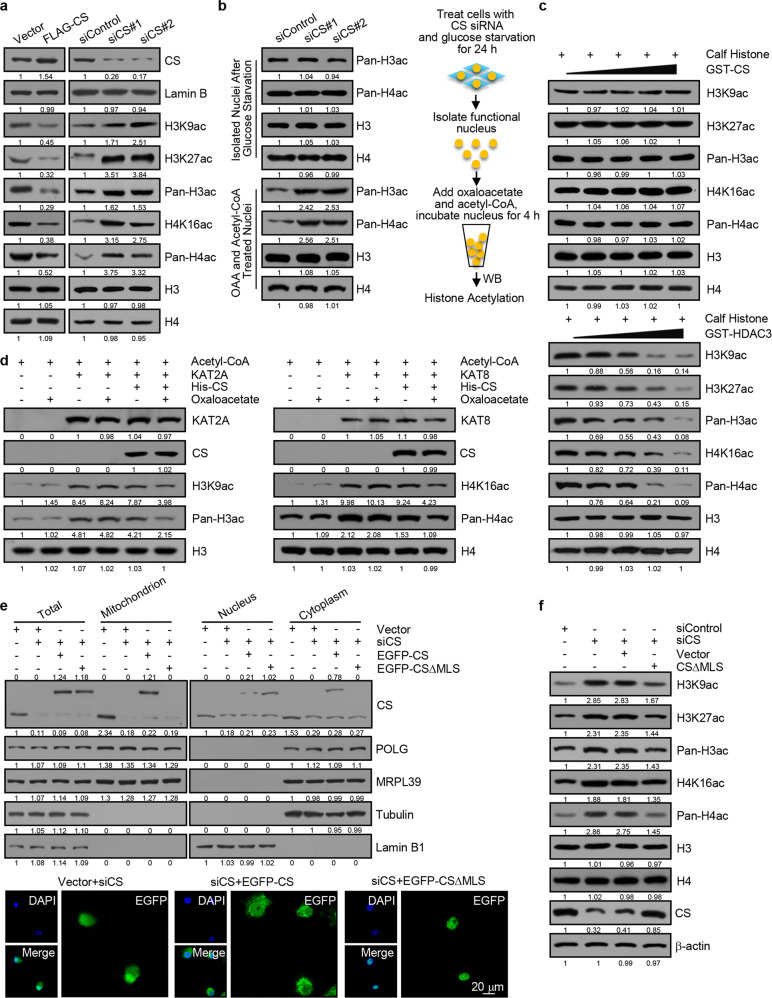Fig. 4.
The nTCA cycle is functionally linked to epigenetic regulation and chromatin dynamics. a HepG2 cells were transfected with FLAG-CS or treated with CS siRNA, the nuclei were isolated and the level of the indicated histone marks or proteins was measured by western blotting. b CS-depleted HepG2 cells were deprived of glucose for 24 h. Nuclei were isolated and incubated with oxaloacetate and acetyl-CoA for western blotting analysis with antibodies against the indicated histone marks or proteins. The work flow for acetylation assays in isolated nuclei is shown. c In vitro deacetylation assays with bacterially expressed GST-fused proteins as indicated and calf thymus histones. The reaction was analyzed by western blotting with antibodies against the indicated histone marks or proteins. d KAT2A or KAT8 was incubated with calf thymus histones and acetyl-CoA in the presence or absence of oxaloacetate and with or without addition of affinity-purified CS from HepG2 nuclei. The reaction was analyzed by western blotting with antibodies against the indicated histone marks or proteins. e HepG2 cells treated with CS siRNA were transfected with EGFP-CS or EGFP-CS∆MLS for nuclei/cytoplasm/mitochondria isolation and western blotting analysis of CS expression. The subcellular localization of CS in these cells was analyzed by fluorescence microscopy. Bar, 20 μm. f HepG2 cells were transfected with CS siRNA and/or CS∆MLS for western blotting analysis with antibodies against the indicated histone marks or proteins

